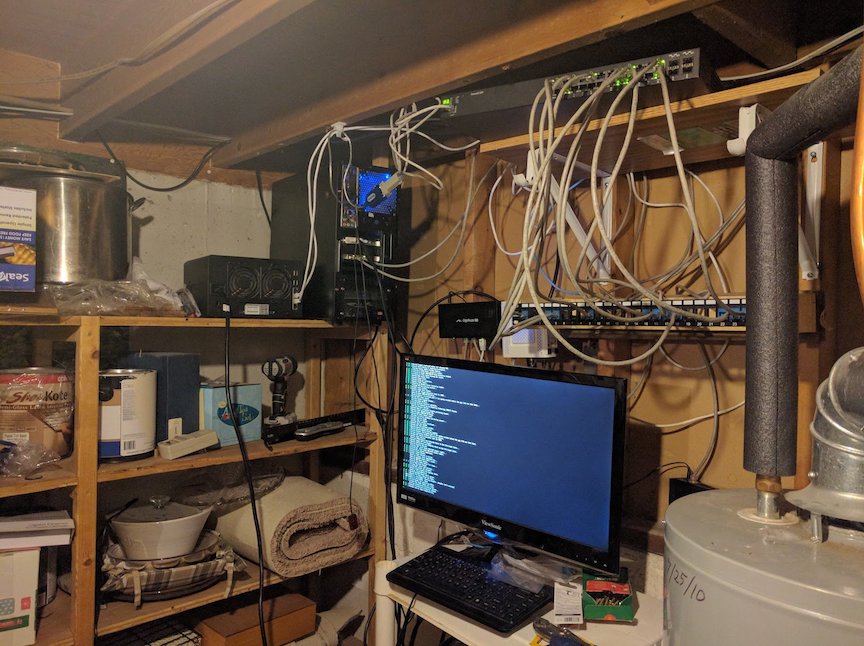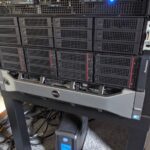For years, I’ve been running a Media server, outlined here. Over time, it’s evolved from a strict XBMC machine, to an Ubuntu server running Plex, sabnzbd, SickBeard, CouchPotato and more.
I had some concerns with the server itself. “Old Faithful” was a three year old six-core AMD FX-6300 (upgraded from an older AM2 CPU) with 32 gb DDR3 UDIMM ECC RAM running Ubuntu and ZFSOnLinux. And despite the motherboard, chipsets and CPU all saying they supported ECC, I really don’t think it did. No memory or system information tests ever showed ECC capable.
I had lost the main SSD drive in her a few times. A combination of older SSDs with a bunch of logging was a death knell for those drives. I was using up all the SATA ports and was probably close to lighting a fire with one of these guys (edit, I’ve learned that this particular model is probably the least fire-prone. So by accident I picked up the right one):

I didn’t exactly have room to build in redundancy for OS drives. So every time I lost the OS SSD, it took forever to get it back up and going. Most of the important stuff was stored on the actual ZFS array, so at least that was safe.
I also managed to need to RMA array drives on a far-too-regular basis (I blame WD Reds for being crappy). My particular tower case made it a pain to actually replace said drives when they failed.
Finally, Plex was getting a little “kerchunky” on it. It would handle a stream or two just fine, but anything more would negatively impact everybody connected. While that server had 6 cores, the cores themselves just weren’t that powerful (though they were power hungry!).
Here is my setup before I started redoing it.

A DiskStation for backup.

This was the last picture I took of the old girl before she got retired, after I had ripped out the ZFS array. That’s at least 4 years of dust holding her together.

VirtualBox for no fun or profit
I don’t know that I want to knock VirtualBox too much. I had been using it for years to spin up random VMs. But it was when I started to use it for serious home development when it started to fail on me.
Running as a GUI, it was fine. It just never behaved correctly as a service running under Ubuntu. A VM that was supposed to start on boot with the server may or may not come up. And if it did, it might have corruption due to the fact that on server shutdown, it didn’t go down cleanly.
One thing was pretty clear to me. I needed something else. I wanted:
- A server with some sort of redundancy built into the OS drives. This priority went out the window when I decided to bare-metal virtualize.
- Something where I wasn’t stuffing drives into a tower case and trying to maneuver drives around PCI cards and RAM.
It was about that time that I discovered /r/homelab on Reddit. I followed posts there for about an hour before I KNEW I needed to build an actual homelab.
“Sometimes you are sitting on a mountain of gold and you don’t even realize it”
I spent the next week or so shopping on eBay for an R710. That seemed to be the recommended server of the time. It has some power and it wasn’t too power hungry or loud. When I found one I liked and was priced right, I put it in my cart. Then I realized it would probably make sense to check “The Pile” first.
The Pile


The Pile is a mountain of retired gear from my business that has been sitting on my floor since at least 2012. As this HomeLab WAS going to have a business function (it’s running as an offsite DR site right now), I decided to dig through The Pile and see if there was anything worthwhile.
Loe and behold, a wild R710 appears:

It was modestly specced, with dual E5520 and 32 GB of RAM, but it was a start. Continued in the HomeLab Mutation


